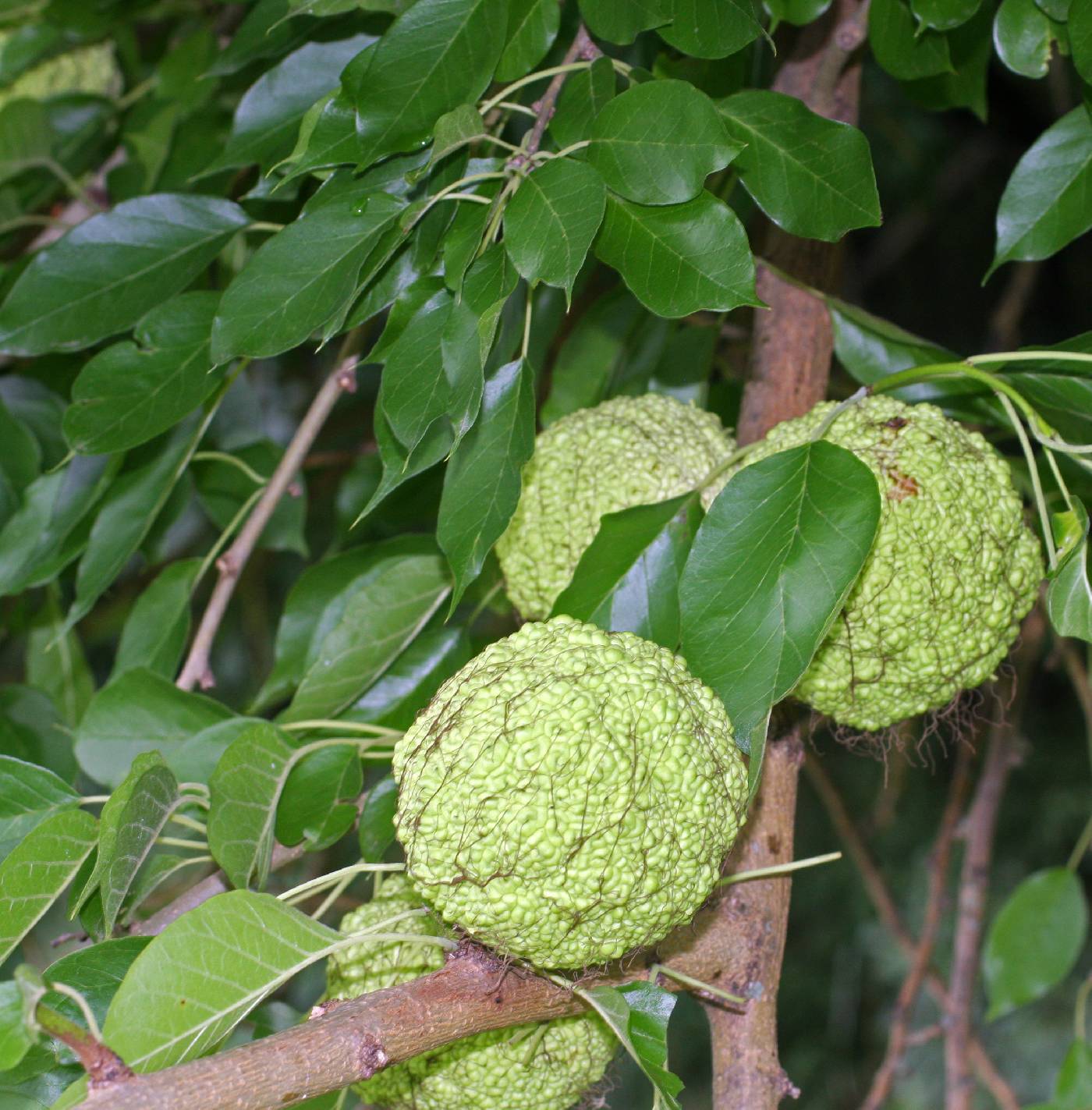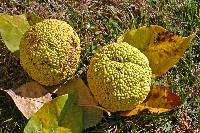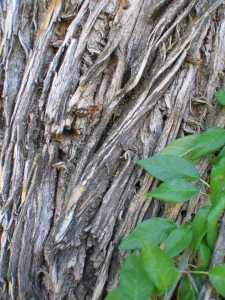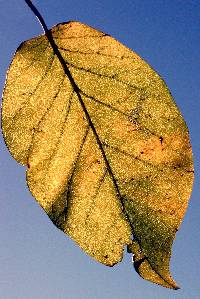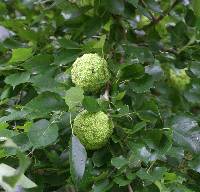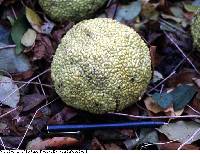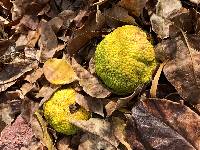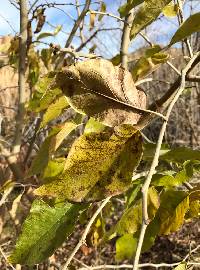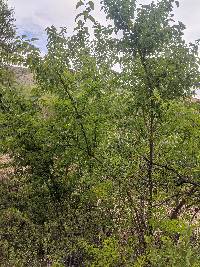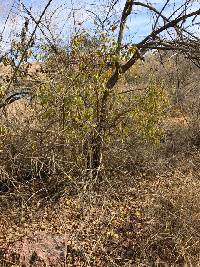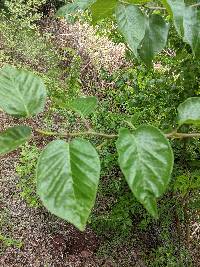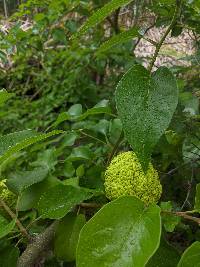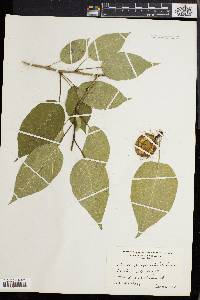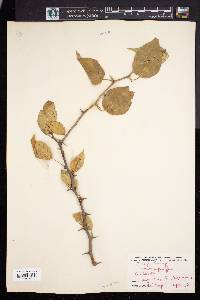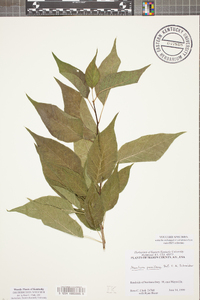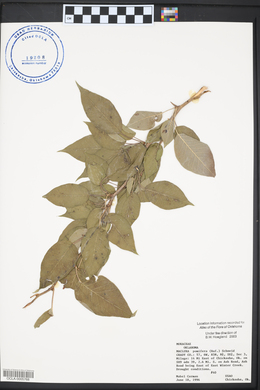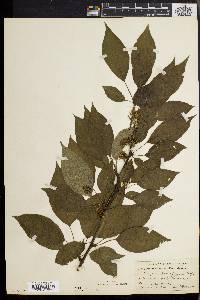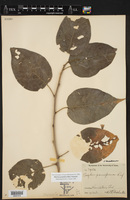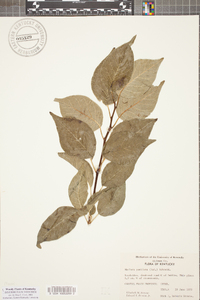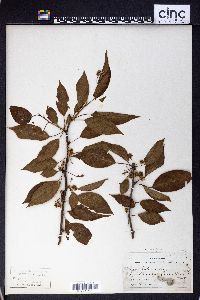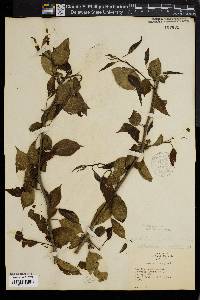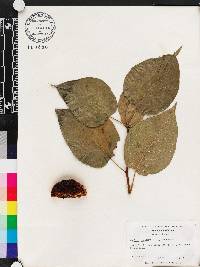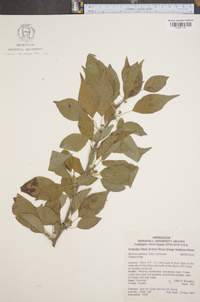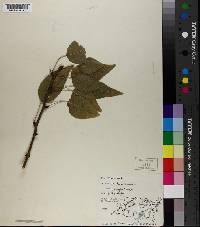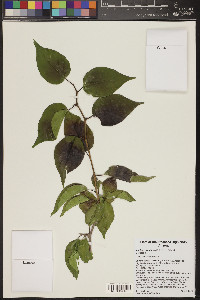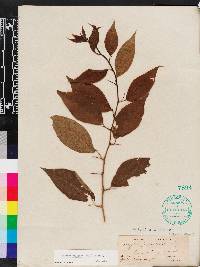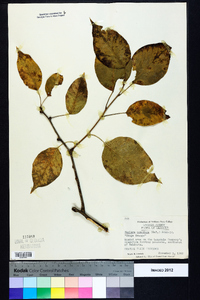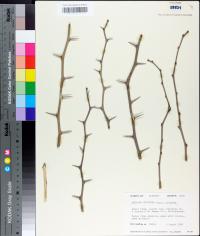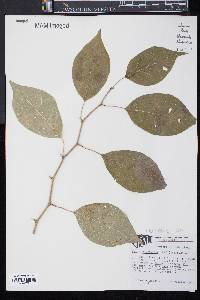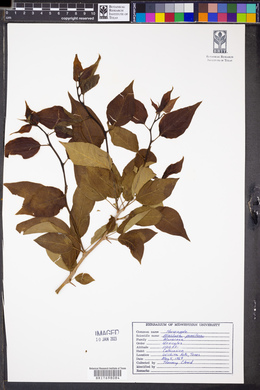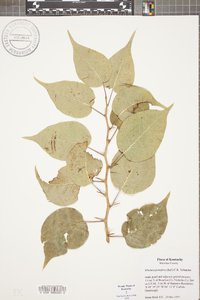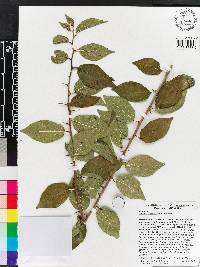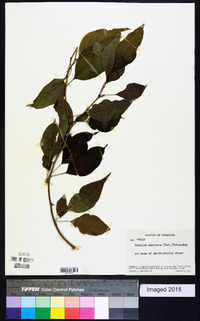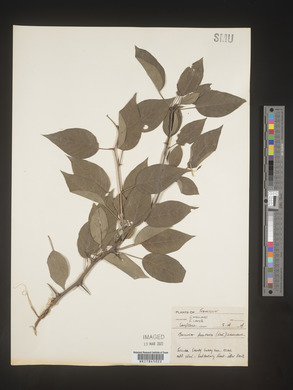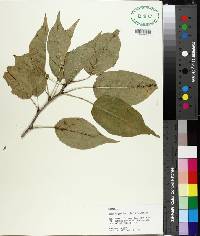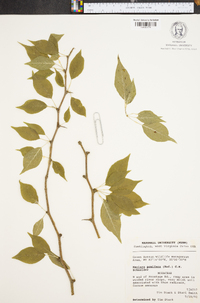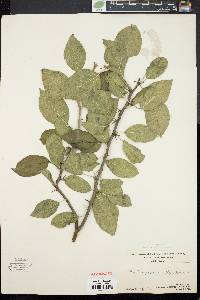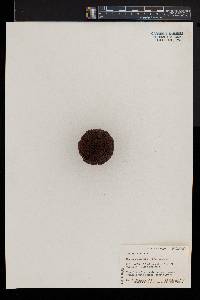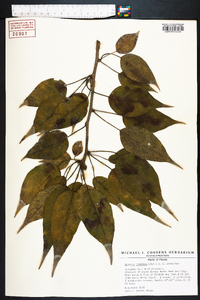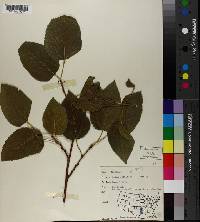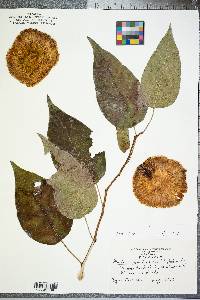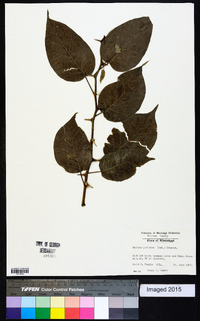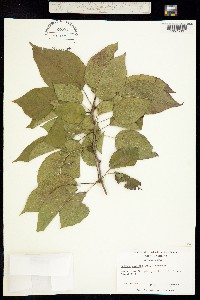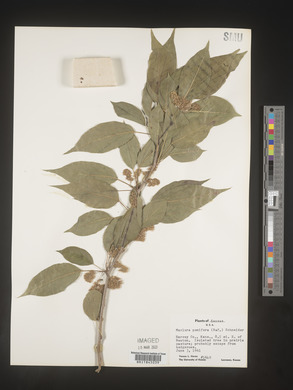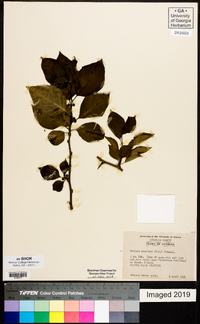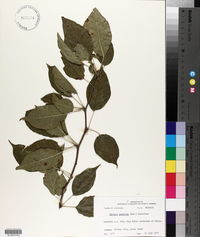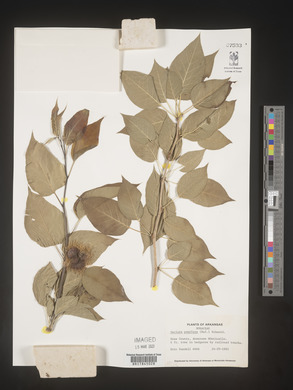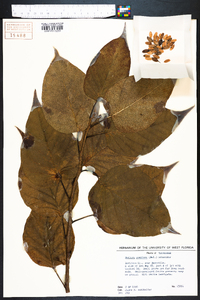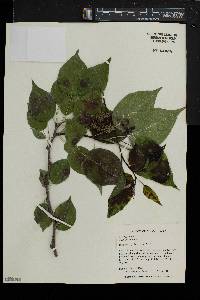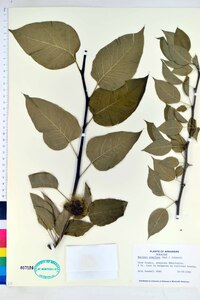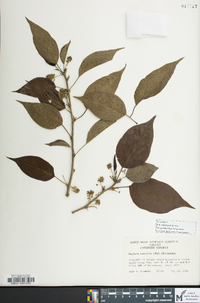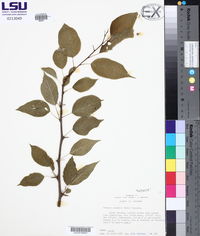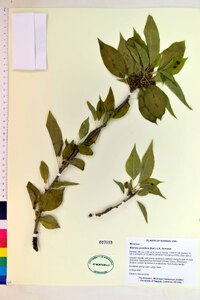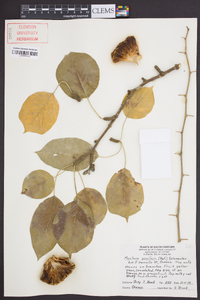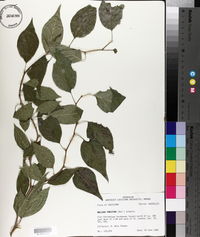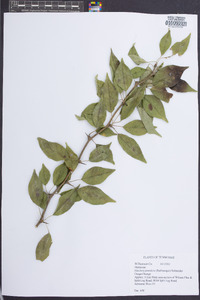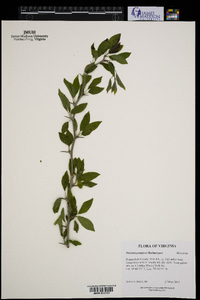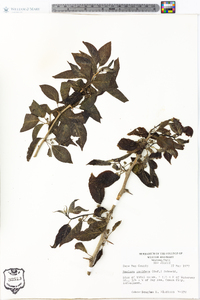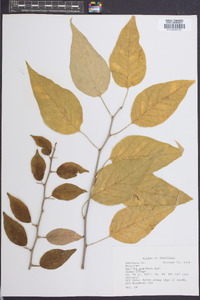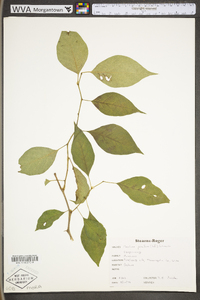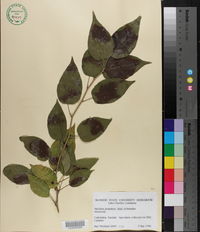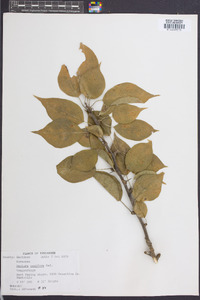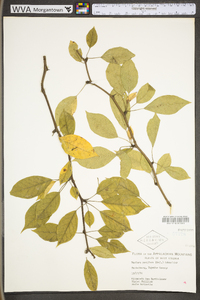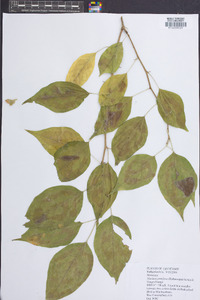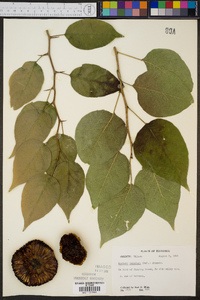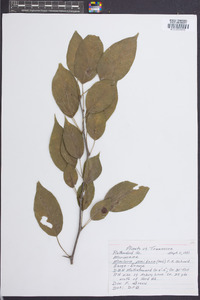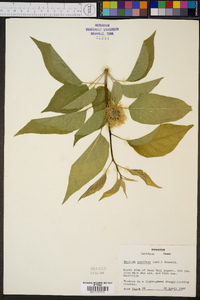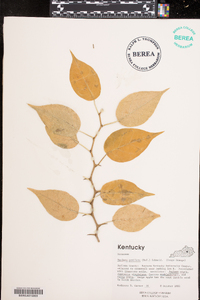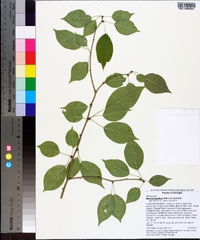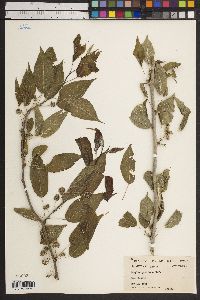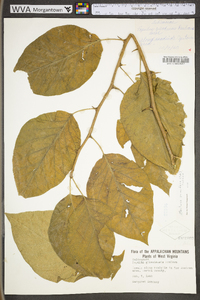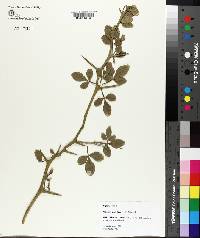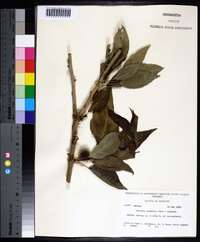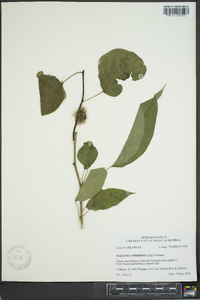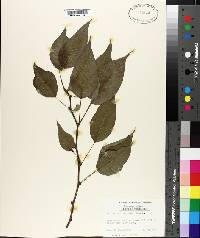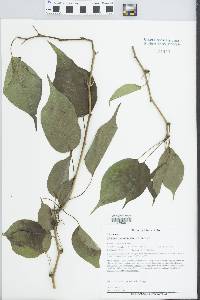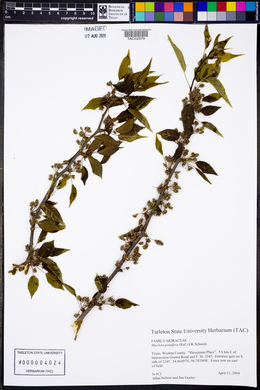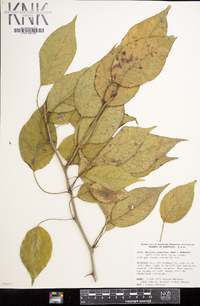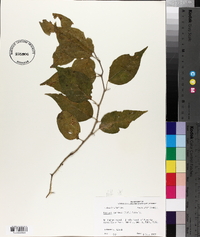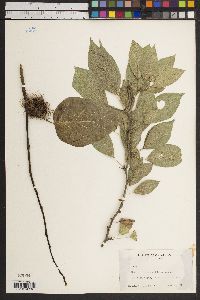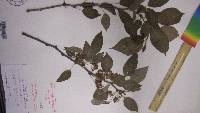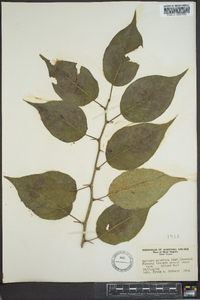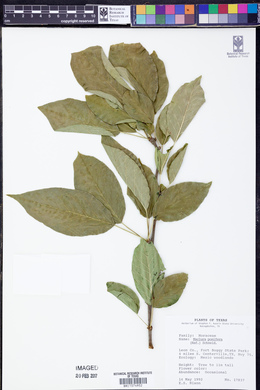
|
|
|
|
Family: Moraceae
Osage-Orange
[Ioxylon pomiferum Raf., moreMaclura aurantiaca , Toxylon pomiferum Raf.] |
Trees , to 20 m. Bark dark orange-brown, shallowly furrowed, ridges flat, often peeling into long, thin strips. Branchlets greenish yellow, becoming orange-brown; thorns stout, straight, to 1.5 cm, usually lateral to spur branch, spur branches often paired. Buds often paired, larger one red-brown, globose, 1.5-2 mm; scales ciliate; leaf scars half round, bundle scars arranged in oval. Leaves: stipules lanceolate, 1.5-2 mm, pubescent and long-ciliate; petiole 1-2.5 cm, pubescent. Leaf blade 4-12 × 2-6 cm, base rounded, apex acuminate; surfaces abaxially pale, glabrate, midrib and veins pubescent, adaxially lustrous, glabrous, midrib somewhat pubescent. Staminate inflorescences clustered on lateral spur branches; peduncle 1-1.5 cm, pubescent; heads globose or cylindric, 1.3-2.3 cm; pedicels 2-10 mm, glabrate. Pistillate inflorescences: peduncle 2-2.5 mm, glabrous or pubescent; heads globose, sessile on obconic receptacle, to 1.5 cm diam. Staminate flowers: sepals distinct, yellow-green, ca. 1 mm, apex acute, pubescent; filaments ca. 2 mm, closely appressed to sepals, flattened. Pistillate flowers: sepals green, obovate, 3 mm, enclosing and closely appressed to ovary, hoodlike, ciliate near tip; ovary ovoid, compressed, ca. 1 mm; style base green, ca. 3 mm, branches 4-6 mm, glabrous; stigma yellowish, papillose. Syncarps yellow-green to green, spheric, surface irregular, exuding milky sap when broken, peduncle short, glabrous or pubescent; achenes completely covered by accescent, thickened calyx lobes and deeply embedded in receptacle. Seeds cream colored, oval to oblong, 8-12 × 5-6 mm, base truncate or rounded with 1-3 minute points, margins with narrow groove, apex rounded, mucronate; surfaces minutely striated or pitted. Flowering spring. Thickets; 0-1500 m; Ala., Ark., Conn., Del., D.C., Fla., Ga., Ill., Ind., Iowa, Kans., Ky., La., Md., Mass., Mich., Miss., Mo., Nebr., N.J., N.Mex., N.Y., N.C., Ohio, Okla., Pa., R.I., S.C., S.Dak., Tenn., Tex., Va., W.Va., Wis. Maclura pomifera is native to southwestern Arkansas, southeastern Oklahoma, and Texas; it is introduced and naturalized elsewhere in the United States. Collections in California, Connecticut, Massachusetts, Rhode Island, and Washington appear to represent isolated escapes. Maclura pomifera has been widely used in fencerows on farms and along roadways in the midwest and eastern states as windbreaks and wildlife shelter. The Comanches used Maclura pomifera as an eye medication (D. E. Moerman 1986).
Tree 8 - 20 m tall, trunk 30 cm - 0.6 m in diameter Leaves: alternate, with a hairy stalk secreting milky sap from the base and lance-shaped stipules 1.5 - 2 mm long. The blade is shiny dark green above, paler with few hairs along the veins beneath, 6 - 12 cm long, 5 - 7 cm wide, egg-shaped to narrow egg-shaped and tapering to a pointed tip, non-toothed and slightly wavy. Flowers: either male or female, found on separate trees (dioecious), yellowish green male flowers borne in hanging clusters, green female flowers borne in spherical heads on short stalks. Fruit: a brain-like, spherical cluster of many single achenes covered by elongated and thickened fleshy calyx lobes, yellowish green, 10 - 14 cm in diameter, heavy, secreting a milky juice when crushed. Bark: orangish brown and shallowly furrowed with interlacing flat ridges, becoming brown and shredded with age. Twigs: zigzag, bright green and hairy when young, becoming orangish brown and smooth, secreting a milky sap when cut. Thorns 1 - 2 cm long are found at each node, especially on twigs facing the sun. Short shoots with two to four leaves may form on second year's growth. Buds: somewhat buried in bark of twigs, often paired, pale brown, 1.5 - 2 mm long, spherical, flattened on top, scales lightly hairy along margin. Terminal bud absent. Form: rounded, with large limbs and a short trunk. Similar species: Maclura pomifera is a distinctive plant in the Chicago Region. Plants have thorns at the nodes; leaves with non-toothed margins, a long-pointed tip, and lance-shaped stipules at the base of the stalk; fruit that is large, spherical, heavy and brain-like; and milky sap that is secreted from the twigs, leaf stalks, and fruit. Flowering: late May to mid June Habitat and ecology: This species tolerates poor conditions and naturalizes by seed and root suckers. It is especially common in old pastures where it forms thickets. Occurence in the Chicago region: non-native Notes: Introduced from the southwestern U.S., this species was once used as a hedge, a windbreak and for making fence posts, railroad ties, and tool handles. It was also commonly used as a living fence for livestock before the invention of barbed wire. A yellow dye can be extracted from the bark. Etymology: Maclura is named after W. Maclure, an American geologist. Pomifera comes from the Latin word for fruit-bearing, referring to the large, spherical fruit. Author: The Morton Arboretum Common Name: osage orange Duration: Perennial Nativity: Native Lifeform: Tree Wetland Status: UPL Synonyms: Ioxylon pomiferum, Toxylon pomiferum Tree to 20 m; lvs lance-ovate, 6-12 cm, acuminate, petiolate; thorns stout, 1-2 cm; fr yellowish-green, 6-12 cm thick, the surface convoluted. Rich, moist soil; Ark., Okla., and Tex., occasionally adventive or persistent after cult. with us. May, June. (Toxylon p.) Gleason, Henry A. & Cronquist, Arthur J. 1991. Manual of vascular plants of northeastern United States and adjacent Canada. lxxv + 910 pp. ©The New York Botanical Garden. All rights reserved. Used by permission. From Flora of Indiana (1940) by Charles C. Deam This tree was formerly much planted for farm fences and windbreaks, especially in our prairie area. Since land has become valuable its use has been discontinued. It has sparingly escaped in all parts of the state and it is a wonder that it has not become an obnoxious weed tree. I recall that I studied two lines of large trees that were planted on each side of a deserted lane in the Ohio River bottoms in Perry County. The line of trees was about a quarter of a mile long and the trees were mostly 10-15 inches in diameter near the base. I estimated that on the ground there were not less than 25 bushels of fruit and I assumed that the trees fruited almost annually. Yet I did not find a single seedling and I do not believe any were dug up. I made no special inquiry to ascertain the cause of the failure of reproduction. .…… Indiana Coefficient of Conservatism: C = null, non-native Wetland Indicator Status: FACU Diagnostic Traits: tree with alternate leaves, the leaves ovate to oblong-lanceolate, entire, sometimes shallowly 3-lobed; pinnately veined; upper leaf surface shiny; twigs stout, spiny, glabrous; fruits in globose cluster 5-15 cm wide, yellowish-green. Deam (1932): This species was formerly much planted for farm fences but since land has become so valuable, its use has been discontinued, and the old fences are being dug up. The tree grows a short t runk, and one was noted in Grant County that was at least 6 dm. in diameter that estimated to be less than fifty years old. This species is subject to the San Jose scale and in some localities it has been killed by it. ...... Osage-Orange wood was prized by native American for making bows. The seeds are embedded in a thick pulp that repels rodents. The large fruits seem to lack contemporary dispersers leading to the speculation that dispersal was by now extinction Pleistocene megafuna. |
|
|
|

